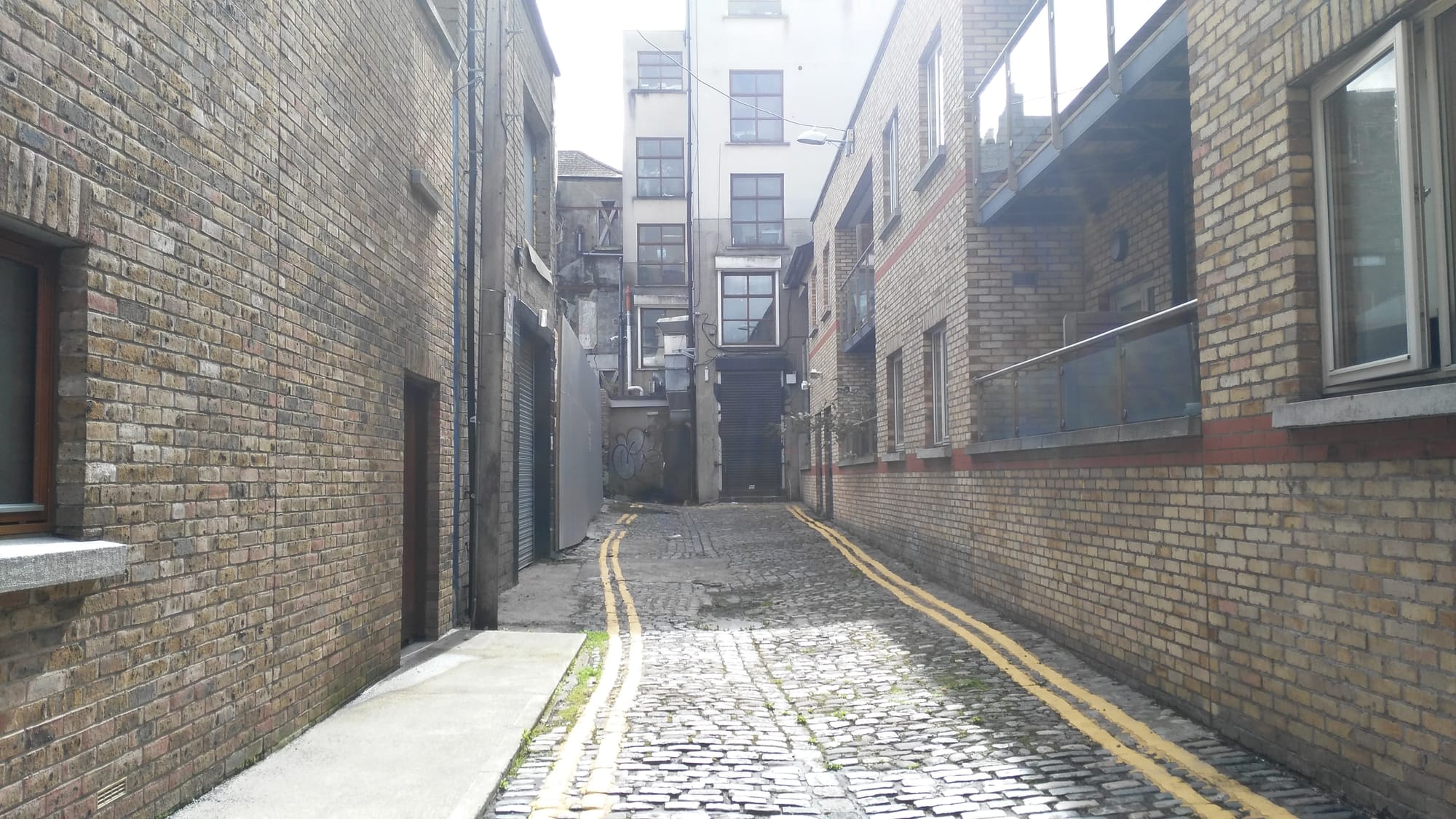Months on, council still investigating ethics complaints against independent councillor
Two councillors have lodged complaints with the council against independent Councillor Gavin Pepper. But there’s been no conclusion yet to those processes.
“Meanwhile, people are dying on the streets,” says Labour Senator Aodhán Ó Ríordáin. “It’s not a dramatic statement, it’s a statement of fact.”

Paddy Kavanagh says he sees people injecting heroin in Hamilton Court near his house every day.
It’s a narrow dead-end lane that sits one street north of the Liffey, just off Strand Street Little.
He says he watches out for people, and will stop and ask them if they’re looking for someone. “They say they’re going to use the toilet. I say, there’s no toilet up there,” he says.
This might be less of an issue by now if a pilot supervised injecting centre had been rolled out. More than 60 percent of needle-exchange clients want access to one, according to a Merchants Quay Ireland survey in September 2017.
But while the Dáil passed legislation 17 months ago laying the ground for an 18-month pilot, work on a facility has yet to begin.
“Meanwhile, people are dying on the streets,” says Labour Senator Aodhán Ó Ríordáin. “It’s not a dramatic statement, it’s a statement of fact.”
In February 2018, the Health Services Executive (HSE) chose Merchants Quay Ireland to operate the first 18-month pilot facility.
The tender was prescriptive, says Tony Geoghegan, the outgoing chief executive of Merchant’s Quay. Especially, around physical infrastructure.
In 2011, when the charity moved to it’s current location, it didn’t have enough money to develop the basement where staff now hope to put the facility.
“We’re not officially awarded the tender until the planning permission is granted,” says Geoghegan. They hope to file for that in the next two weeks.
One difficulty has been that this is the only such project in the country, Geoghegan says. So there’s no precedent.
Another challenge is the amount of physical development that had to take place between February (when they were awarded the tender) and when they officially sign the contract, he says, indicating the very beginnings of construction work taking place in the basement.
As a charity, Merchants Quay Ireland relies on voluntary funding and its own reserves.
The organisation won’t get back any of the money it has spent so far on architects and engineers, he says. It can’t get funding for the service until it officially signs the contract.
January would be the earliest that builders might be on-site, says Geoghegan. If that happened, the service might open in April – but that’s all assuming there are no objections to the planning application, and Geoghegan expects that there will be.
Ó Ríordáin, the Labour senator, says he doesn’t see any sense of urgency from the HSE to get the pilot project up and running. “If you’re serious about delivering these things, officials should be having meetings three times a day. I can’t remember the last time the Oireachtas got an update on this,” he says.
Merchants Quay Ireland’s survey a year ago found that 53 percent of its needle-exchange clients planned to inject in public spaces, and 39 percent of those planned to do it on the street.
At Hamilton Court, Kavanagh and others’ frustration with public injecting has led them to call for gates to be put up again on the lane.
A council spokesperson said there are no plans to close any lanes in the area.
Fine Gael Councillor Ray McAdam says that’s because no formal proposal has been submitted yet. Meetings are due shortly, he says.
People didn’t use the lane for drug use when there were gates up, independent Councillor Christy Burke said at last week’s meeting of the joint policing committee for the central area of the city.

Philip Rowe, owner of Sin É on Ormond Quay, says he has seen public injecting there, too. The lane off Strand Street Little runs behind the venue. So staff don’t feel safe using the emergency exit there, he says.
Rowe doesn’t think the issue can be solved by a supervised injecting facility alone. “I think it’s a bigger problem than that,” he says.
There can be as many as 15 people using in the lane some days, he says. An injecting facility “would be safer and cleaner” but, as he sees it, Gardaí need to clamp down on dealers on the streets too.
Geoghegan says he knows some people don’t support the service.
In an ideal world, nobody would use, he says. But failing that, services like supervised injecting facilities and needle exchanges can refer people to rehabilitation, and help them stop using – and stem the high number of overdose deaths.
Twenty-eight people classed as “injectors” died in Dublin in 2015, according to the Health Research Board.
“The sooner it opens the better,” says Tony Duffin, CEO of the Ana Liffey Drug Project, which has lobbied for a supervised injecting facility since 2012.
“Every day people are injecting down laneways. It would give them somewhere safe. […] This is a legitimate health service,” he says.
[CORRECTION: This article was updated at 17.30 on 26 September. An earlier version of this article said the lane in question was Ormond Place when it is in fact Hamilton Court. We apologise for the error.]